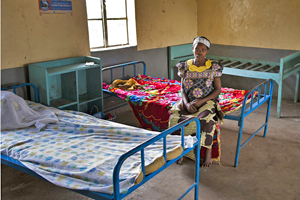The cost of absenteeism
 From a health systems perspective, absenteeism1—defined as chronic, unexcused absence from work—adversely affects health worker productivity and undermines health service quality. Since the 2006 World Health Report, some studies have been undertaken to systematically measure absenteeism’s effects; however, more needs to be done to adequately address underlying motivation and accountability issues, inform country policies, and reduce health worker absenteeism (WHO 2006).
From a health systems perspective, absenteeism1—defined as chronic, unexcused absence from work—adversely affects health worker productivity and undermines health service quality. Since the 2006 World Health Report, some studies have been undertaken to systematically measure absenteeism’s effects; however, more needs to be done to adequately address underlying motivation and accountability issues, inform country policies, and reduce health worker absenteeism (WHO 2006).
Absenteeism has high costs on many levels: individual, organizational, and economic. To compensate for absent colleagues, health workers are burdened with additional work and sometimes forced to perform tasks for which they are unqualified. As more workers are absent without consequences, those who tended to respect their work hours become increasingly demotivated and may also adopt these negative practices. This can result in a culture in which absenteeism is accepted. The financial costs of reduced productivity due to absenteeism can be high. A study in Machakos District, Kenya estimated that the absenteeism rate, averaging 25%, cost each health facility $51,000 per month (IPAR 2008). While absenteeism has adverse consequences at the facility level, its impact on a country’s health system can be substantial. For example, an average absenteeism rate of 40%, such as has been observed in India, translates to a national health workforce that is effectively 40% smaller than it appears on paper.
As illustrated in the example of the nurse and mother, absenteeism also has consequences for health service demand. If health workers are not at the facility during their scheduled hours, whether for part of the day or the whole day, their unreliability prevents communities from accessing needed care. Patients pay increased transport costs and lose daily wages when they make multiple attempts to be seen; additional costs may be incurred to manage a condition worsened by delays in accessing care. In China and India, clients are forced to pay a higher price for services in the private sector (Hsiao and Heller 2007; NCMH 2005). These factors ultimately limit improvements to health.
1 The authors recognize the distinction between absenteeism and excused absences. While the absenteeism rates as shown in Figures 1 and 2 (see appendix) include health workers that may not be present at their posts due to job vacancies, planned travel for trainings, excused sickness, vacation, or scheduled leave for social obligations such as marriages or funerals, these issues are not specifically addressed in this brief.

